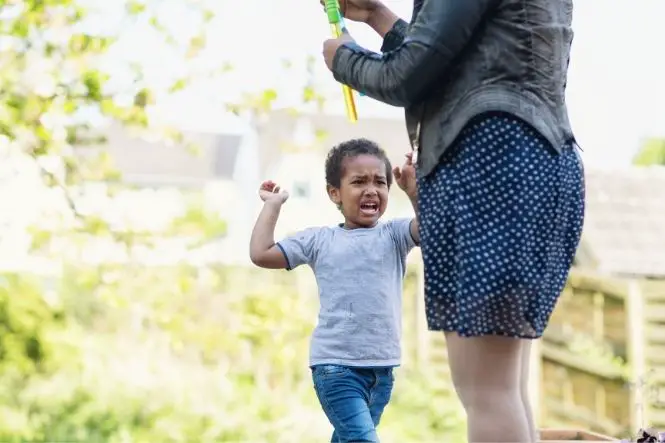Body rocking or the repetitive and rhythmic self-rocking of a child’s body, is a common method of self-soothing in young children.
Generally, children who engage in this behaviour will discover it around six months of age and will grow out of it by about three years of age.
Though it may be a little disconcerting for parents to observe, body rocking rarely presents a hazard to children.
Rather than worrying, parents should observe the behaviour to better understand it and endeavour to keep their children safe for as long as they choose to engage in body rocking.
Understanding Body Rocking
Children often fall into body rocking as a method of soothing themselves, though sometimes they also body rock as a way of providing pain relief or expressing frustration.
Many children softly rock in a rhythm that they find soothing when they are tired and some children regularly do this at bedtime to help themselves fall asleep.
Other children do not engage in body rocking routinely but do turn to this behaviour when they are experiencing physical or emotional pain.
Some children may also engage in body rocking when they are frustrated and unable – or choose not to – explain their emotions.
Finally, other children body rock when they are humming or singing softly (or in their head!), which a simple discussion will help uncover.
Body Rocking and Developmental Disorders
Repetitive motions and behaviours such as body rocking are sometimes a sign of developmental disorders such as Autism, but they are not the only signs.
If a child body rocks but does not exhibit any other warning signs then there is usually little cause to worry.
However, if a parent is concerned about a child’s development and observes body rocking and/or other repetitive motions then it would be wise to contact a GP, educational or child mental health professional for further information and/or a professional opinion.
Keeping Children Safe While Body Rocking
Most children who engage in body rocking do not do so with the intention of hurting themselves, but parents should remain vigilant anyway.
Parents of children who engage in body rocking while in their cribs, playpens or beds should check that the motions have not loosened any of the pieces nor that there are screws or other pieces that could present a hazard to the child if they bump into them.
It might also be possible to drape “bumpers” or soft linens on the sides of furniture and equipment to reduce the impact (and noise) of body rocking.
Moving furniture or equipment away from walls may also help keep it intact and from making noise during body rocking episodes.
Body rocking is a behaviour that generally starts at around six months of age and tends to end by a child’s third birthday.
Children may engage in body rocking for a variety of reasons, including as a means of soothing themselves, relieving pain or expressing frustration, though it may also be an indicator of a developmental disorder if accompanied by other signs.
Parents who are concerned about their child’s body rocking, who observe body rocking beginning after the age of 18 months, or who notice their children engaging in loud or aggressive body rocking during the daytime, should consult their GP for further information.



